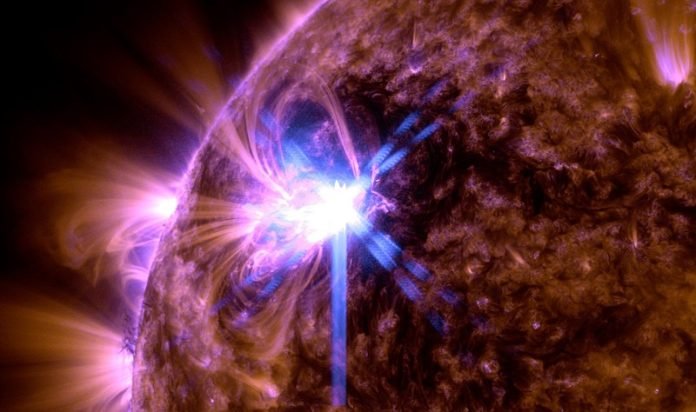
A recent study has brought us closer to understanding the massive bursts of energy seen in stellar superflares, which are far more intense than the biggest solar flares we know from our own sun.
Researchers are now suggesting that a process called hydrogen recombination could be the key to explaining these powerful phenomena.
Observatories like the Kepler Space Telescope and the Transiting Exoplanet Survey Satellite (TESS) have been instrumental in collecting data on these superflares.
Despite their primary mission to find exoplanets, these telescopes have detected sudden and extreme increases in brightness from distant stars, which are believed to be caused by superflares.
Superflares are immense magnetic explosions in the atmospheres of stars, releasing up to 10,000 times more energy than the largest flares observed on the sun.
Understanding these flares is complicated because they can only be seen as brief brightenings of the stars, which appear as mere points of light even through powerful telescopes.
The challenge has been to find a model that can explain the vast amount of energy produced by these superflares.
Traditionally, scientists have considered two main theories: one that treats the flare as a sort of “blackbody” radiation at extremely high temperatures (about 10,000 Kelvin), and another that involves the ionization and recombination of hydrogen atoms.
In a new study published in the Monthly Notices of the Royal Astronomical Society, researchers from the Mackenzie Center for Radio Astronomy and Astrophysics in Brazil and the University of Glasgow in the UK analyzed these two models.
Their findings strongly support the hydrogen recombination model as the most physically plausible explanation for the broadband optical emission seen in superflares.
Paulo Simões, a professor at the Mackenzie Presbyterian University and lead author of the study, explained that the hydrogen recombination model fits better with what we know about how flares work.
This model suggests that the energy seen as light from superflares comes from hydrogen atoms, which get split into protons and electrons and then recombine.
The study looked at 37 superflares on the binary star system Kepler-411 and five on Kepler-396, concluding that the hydrogen recombination model not only fits better but also results in lower estimates of total flare energy—making it more consistent with known energy processes in flares.
Just like solar flares, which have been studied since they were first observed in 1859, stellar flares involve complex interactions of magnetic fields and particles.
These flares can affect satellite operations and communications on Earth, demonstrating the importance of understanding such energetic events.
This research not only challenges previous assumptions but also enhances our understanding of stellar behavior, providing insights that could one day impact how we predict and manage the effects of solar activity on our own planet.



